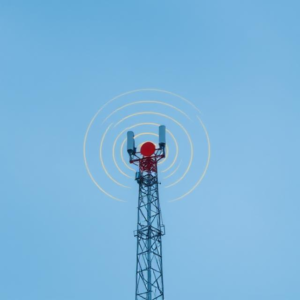Smart Antennas in Communication are special types of antennas that can automatically adjust and optimize their performance based on the environment around them. They are used in wireless communication systems like cell phones, Wi-Fi, and satellite communications to improve signal quality, reduce interference, and increase the overall efficiency of the network.
Here’s an easy breakdown of how smart antennas work and their main features:

1. Basic Antennas vs. Smart Antennas
- Basic Antennas: Traditional antennas usually send or receive signals in all directions, which can lead to wasted energy and interference.
- Smart Antennas: These antennas can focus their energy in specific directions, or adjust where they are sending or receiving signals, to get the best possible performance.
2. Key Features of Smart Antennas
- Directionality: Smart antennas can change the direction of their signal, meaning they can “aim” at a specific user or device. This helps focus the energy where it’s needed, reducing signal loss and improving quality.
- Adaptive: These antennas can automatically adjust their behavior based on the environment, such as when there are obstacles (like buildings) or interference (from other devices).
- Beamforming: This is a technique where the antenna arranges its signal in a way that it sends energy only towards the user or device, rather than in all directions. This improves signal strength and reduces interference from other directions.
- Multiple Antennas (MIMO): Many smart antenna systems use multiple antennas working together. This helps send and receive more data at once, improving speed and reliability.
3. How Do Smart Antennas Work?
- Signal Processing: Smart antennas use complex algorithms and signal processing techniques to figure out the best direction to send or receive a signal. They do this in real-time, continuously adjusting based on changes in the environment.
- Feedback Loops: The antenna system constantly monitors the quality of the signal it’s receiving and transmitting. If it detects problems, it makes adjustments to fix them, such as changing the direction or power of the signal.
4. Advantages of Smart Antennas
- Improved Coverage: By directing signals where they’re needed, smart antennas can provide better coverage, especially in areas with lots of obstacles.
- Higher Capacity: Since smart antennas can focus signals, they reduce interference and allow more devices to communicate at once without slowing down the network.
- Better Signal Quality: Smart antennas reduce issues like dropouts, slow speeds, or low-quality connections, especially in places with lots of noise or interference.
- Energy Efficiency: Because they focus their signals, they use less power than traditional antennas that send signals everywhere.
5. Applications of Smart Antennas
- Cellular Networks: In mobile phone systems, smart antennas help improve call quality, data speeds, and network efficiency.
- Wi-Fi: Smart antennas can help improve Wi-Fi coverage in homes and offices by focusing the signal towards connected devices, improving speeds and reducing dead zones.
- Satellite Communications: They are used to improve the quality and efficiency of signals sent between Earth and satellites, ensuring better service.
6. Types of Smart Antennas
- Switched Beam Antennas: These antennas switch between different predefined beams to direct the signal to the best direction based on where the user is located.
- Adaptive Array Antennas: These antennas dynamically adjust their beams in real-time to optimize signal reception and transmission based on the surrounding environment.
7. Challenges
- Complexity: Smart antennas require advanced algorithms and signal processing, which can make them more complex and expensive than regular antennas.
- Environmental Changes: The system needs to continuously adjust to environmental changes like obstacles or interference, which can be tricky in very dynamic conditions.
Summary
Smart antennas are advanced antenna systems that can dynamically adjust their signal direction and strength based on the surrounding environment. They are used in wireless communication systems to improve signal quality, reduce interference, increase coverage, and make networks more efficient. The main goal is to provide a better, more reliable connection for devices like smartphones, Wi-Fi routers, and satellite systems.
Tags: adaptive antennas, adaptive array antennas, advanced antenna systems, antenna algorithms, antenna beam steering, antenna coverage enhancement, antenna directionality, antenna hardware, antenna interference management, antenna noise reduction, antenna power management, antenna signal focusing, antenna signal strength, antenna system complexity, antenna technology, Antennas, beamforming, cellular network antennas, communication network antennas, dynamic beam adjustment, energy-efficient antennas, environmental adaptation, feedback loops, interference reduction, MIMO (multiple input multiple output), network capacity, real-time signal processing, satellite communication antennas, signal optimization, signal quality improvement, signal reception, signal transmission, smart antenna challenges., smart antennas, switched beam antennas, Wi-Fi antennas, wireless communication antennas, wireless network efficiency


